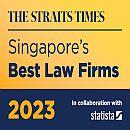E-briefing: The Final Phase of Singapore's Efforts to Modernise and Strengthen Its Corporate Rehabilitation and Debt Restructuring Regime
The Final Phase of Singapore's Efforts to Modernise and Strengthen Its Corporate Rehabilitation and Debt Restructuring Regime
Insolvency, Restructuring and Dissolution Act 2018
Introduction
- The Insolvency, Restructuring and Dissolution Act 2018 (the “Act”), passed by the Singapore Parliament on 1 October 2018 and assented to by the President on 31 October 2018, is the third and final phase of Singapore’s efforts to modernise and strengthen our laws concerning insolvency and debt restructuring. The Act will come into operation on a date that the Minister appoints by notification in the Gazette.
- The phased approach of implementation first commenced in 2015 with the revision to the Bankruptcy Act (Cap. 20). The first phase sought to (1) facilitate rehabilitative discharge frameworks for bankrupts, (2) encourage institutional creditors to exercise financial prudence when granting credit and (3) promote more efficient use of public resources by requiring institutional creditors to appoint private trustees in bankruptcy.
- The second phase of the revamp took place in 2017 with the amendments to the Companies Act (Cap. 50). These changes enhanced the corporate rescue and debt restructuring regimes with ambitions to make Singapore a forum of choice for debt restructuring. The reforms include a new framework for schemes of arrangement, enhancements to the judicial management process and new provisions relating to cross-border insolvency cases.
- The consolidation, regulations and reforms brought about by the Act in this final phase aims to further Singapore’s strides toward becoming an international debt restructuring hub.
- The main objectives of the Act are to:
- Consolidate the personal and corporate insolvency and restructuring laws into a single “omnibus” legislation.
- Establish a regulatory regime for insolvency practitioners.
- Enhancing Singapore’s insolvency and restructuring laws through strengthening the debt restructuring regimes.
Key Amendments
Consolidation of Insolvency Legislation
- Prior to the Act, Singapore’s insolvency and restructuring legislative framework was mainly contained in the Bankruptcy Act (Cap. 20) (with respect to personal insolvency) and the Companies Act (Cap. 50) (with respect to corporate insolvency), along with related regulations.
- When the Act finally comes into effect, the Bankruptcy Act, in its entirety, along with the provisions relating to corporate insolvency and restructuring in the Companies Act will be repealed. Consequential and related amendments made to almost 70 other Acts of Parliament shall also come into effect.
- The new Act is thus an assembly of provisions ported over from the existing Companies Act and Bankruptcy Act. Sections 119 to 250 of the Act relate to liquidation and Sections 273 to 437 of the Act relate to personal bankruptcy.
- There have, however, been some amendments in the passing of the Act, of which the key changes have been summarised in the comparative table below:
|
Personal Bankruptcy |
|||
|
Category |
Bankruptcy Act |
Under the Act |
Effect |
|
Administration of bankruptcy cases. |
Secured creditors did not need to indicate an intention to claim interest on debts owed by the bankrupt. |
S 327(4) of the Act: Secured creditors must notify the Official Assignee of their intention to claim interest within 30 days after the making of a bankruptcy order. |
Allows the bankrupt’s assets and liabilities to be ascertained earlier with greater clarity, promoting more transparency and efficiency in administration of the bankruptcy. |
|
Liquidation |
|||
|
Category |
Companies Act |
Under the Act |
Effect |
|
Appointment of the Official Receiver (“OR”) as liquidator. |
The OR was the default liquidator and there was no obligation on the applicant to appoint private liquidator even if the company may have sufficient assets to do so. This was undesirable as the OR has limited resources. |
S 135(3) of the Act: The OR can only be nominated if the applicant has taken reasonable steps but is unable to get the consent of a licensed insolvency practitioner to be appointed as liquidator, and the OR consents to such nomination. |
Re-focuses the OR’s role in overseeing the conduct of liquidation and cases, and ensures that the OR’s limited resources are not overburdened. |
|
Dissolution of a company in liquidation. |
There was no summary procedure that catered to cases where companies had insufficient assets to pay for the administration of their own winding up. |
SS 209-211 of the Act: OR and private liquidators who have obtained consent from the OR can trigger the early dissolution procedure which allows the company to be struck off the register and dissolved within 30 days from such notice. |
Streamlines the use of public resources and funds in administering cases where there are insufficient assets to even fund the administration of the liquidation. |
|
“Wrongful trading” provisions |
Criminal liability is a prerequisite to impose civil liability against the officer of a company for insolvent trading regimes. |
S 239 of the Act: The Court is empowered to make a declaration that any person who was a knowing party to the company in its trading wrongfully is personally responsible for debts or liabilities of the company. |
Amends the unsatisfactory regime of requiring criminal liability before an application could be made to impose civil liability against officers of the company, which was onerous and thus an underutilised process. |
Regulatory Regime for Insolvency Practitioners
- Sections 47 to 60 of the Act mandates new licensing, qualifications, standards and disciplinary measures applicable to parties acting as “insolvency practitioners” which, as defined in Section 47(1) of the Act, include liquidators, judicial managers, receivers, managers, trustees of a bankrupt’s estate and nominees under voluntary arrangements.
- Previously, there was limited room for redress where the conduct of liquidators and judicial managers fell short of expected standards, beyond those laid out in their own professional licensing regimes.
- The Insolvency and Public Trustee’s Office under the Ministry of Law will now regulate over 300 insolvency practitioners through a two-step approach:
- Firstly, Sections 50 and 51 of the Act set out licensing requirements and minimum qualifications required of insolvency practitioners.
- Secondly, Sections 56 to 60 of the Act now provide for an investigation and disciplinary framework, which includes revoking licenses and imposing penalties against errant officer holders.
- These changes are welcomed as they will set a common and consistent set of standards to regulate insolvency practitioners in Singapore’s burgeoning insolvency and debt restructuring practice.
Schemes of Arrangement
- The Act introduces two updates with regards to schemes of arrangement:
- Commencement or Continuation of Proceedings During a Moratorium
- Section 211B of the Companies Act has been re-enacted as Section 64 of the Act with a new subsection (12)(b). This stipulates that neither an order by the Court under Section 64(1) of the Act nor the automatic moratorium under Section 64(8) of the Act affects the commencement or continuation of any proceedings prescribed by regulations. This empowers the Minister to apply this power in a targeted manner where necessary, particularly in respect to writs for an action in rem against a vessel.
- Clarifications to Dissenting Classes of Creditors to Schemes
- Section 211H of the Companies Act has been re-enacted as Section 70 of the Act which empowers the Court to approve a scheme despite there being dissenting classes of creditors. The addition of Section 70(4)(b)(ii)(B), which stipulates that a person subordinate to the dissenting class must not receive or retain any property “of the company”, clarifies that the cram-down provisions were never meant to be concerned with adjustments to shareholders’ interests.
- In conclusion, these amendments to schemes of arrangements seek to fill the gaps that surfaced following the Companies (Amendment) Act 2017 where provisions of Chapter 11 of the US Bankruptcy Code and other international and supranational regulations were transposed and adapted into Singapore’s legislation.
Judicial Management (“JM”)
- The Act also mandates three key changes to the JM process:
- Company’s Placement into a JM Without a Court Order
- Previously, companies could only enter into a JM by a Court order. Section 94 of the Act now allows a company to place itself into JM subject to the agreement and support of creditors. This allows companies to focus their resources on rehabilitation by minimising the formalities, expenses and delays that would otherwise be endured. Regardless, the JM process will continue in the same manner under the supervision of the Court regardless of how the JM commenced.
- Judicial Managers Empowered to Seek Third-Party Funding
- Section 99 and the First Schedule of the Act stipulates the powers of the judicial managers, and, in particular, paragraph (f) of the First Schedule is a new power.
- Now, in facilitating third-party funding, judicial managers and liquidators can assign proceeds of claims to such third-parties, in exchange for their funding the action. This will in turn benefit stakeholders by providing higher recoveries, if such actions are successful.
- No Imposition of Personal Liability on Judicial Managers
- Section 102 of the Act re-enacts section 227I of the Companies Act concerning agency and liability for contracts. However, in section 102 of the Act, the provision imposing personal liability on judicial managers has been omitted. This is to avoid discouraging judicial managers from entering into contracts beneficial for the company, and given that judicial managers are able disclaim such imposition of personal liability anyway, which thus renders such impositions purely academic.
Ipso Facto Clauses
- Ipso facto clauses entitle a party to immediately terminate or modify a contract on the occurrence of an insolvency triggered event such as debt restructuring. Previously, there were no restrictions on the application of such clauses. This posed difficulties for a company whose business relied on key contracts containing ipso facto clauses to commence debt-restructuring processes as it risked counterparties unilaterally terminating such key contracts.
- Adopting the restructuring regimes in the United States, Canada and Australia, Section 440 of the Act now introduces restrictions on the operation of certain types of ipso facto clauses into the restructuring and insolvency laws of Singapore.
- Section 440 of the Act stipulates that upon the commencement and before the conclusion of any debt-restructuring exercise, no party by reason of the commencement of these proceedings may:
- terminate or amend, or claim accelerated payment or forfeiture, under any agreement with the company; or
- terminate or modify any right or obligation under any agreement with the company.
- It is important to note that Section 440 of the Act is only limited to ipso facto clauses pertaining to a party filing for restructuring. The section, thus, does not apply to ipso facto clauses that are triggered on any other contractually provided ground.
- The protections afforded to the debtor under Section 440 of the Act are not without limit and the interests of the counterparty are balanced through safeguards found in subsections 440(4) and (5) of the Act. Government contracts, ship charters and eligible financial contracts are not subject to the restrictions under section 440(1). There is also a further safeguard which allows counterparties facing significant financial hardship to apply to the Court for relief.
- There is no doubt that section 440 of the Act is the most controversial aspect of the third phase of reforms, especially because these very restrictions were previously rejected and not adopted, following the suggestions by the Insolvency Review Committee back in 2013. This demonstrates the progressive shift of Singapore’s debt restructuring and insolvency laws from one that was largely pro-creditor towards one that is largely pro-debtor.
Concluding Remarks
- As elucidated by the Senior Minister of State for Law, Mr Edwin Tong SC, during the second reading of the Bill, the aims for the third and final phase of the Singapore’s debt restructuring overhaul are twofold. Firstly, it is to benefit local businesses experiencing financial difficulty by introducing more potent rehabilitative tools. Secondly, it is to further Singapore’s position as a forum of choice for foreign debtors by creating a restructuring regime that is both modern and progressive.
- With the international insolvency federation (INSOL) recently launching their first overseas office and Asian hub on our shores, it is no doubt that the efforts to strengthen Singapore as an international centre for cross-border debt restructuring are reaping rewards. As we enter into the next decade, Singapore’s debt restructuring ecosystem will continue to face headwinds with the country’s recent economic slowdown which will bring about a whole series of challenges requiring it to continually improve itself.
NOTE: The content of this article is for general information only and does not constitute any form of legal advice. Please seek specific legal advice regarding your specific circumstances.
Eversheds Harry Elias Restructuring & Insolvency Practice Group
Eversheds Harry Elias’ Restructuring and Insolvency practice is a leading practice in Singapore comprising of a dedicated team that is well equipped to advise on both contentious and non-contentious matters involving corporate and individual restructuring and insolvency.
Together with Eversheds Sutherland, which is one of the largest global full service law firms, with 69 offices in 34 countries, our global restructuring and insolvency practice covers key jurisdictions across the world and includes many lawyers listed as insolvency experts in leading legal directories including Chambers, Legal 500, GRR, Asialaw Profiles, Benchmark Litigation and IFLR1000.
We are therefore well placed to advise and support our clients in any cross-border restructuring and insolvency matters.
For further information, contact:
Justin Chia
Head, Restructuring & Insolvency
Partner, Eversheds Harry Elias
JustinChia@eversheds-harryelias.com
+65 6361 9814
Chua Jian Zhi
Senior Associate, Eversheds Harry Elias
Jianzhi@eversheds-harryelias.com
+65 6361 9814
Charles Ho
Senior Associate, Eversheds Harry Elias
CharlesHo@eversheds-harryelias.com
+65 6361 9351
Kok Yee Keong
Senior Associate, Eversheds Harry Elias
KokYeeKeong@eversheds-harryelias.com
+65 6361 9813
For more information, please contact our Business Development Manager, Ricky Soetikno at rickysoetikno@eversheds-harryelias.com













